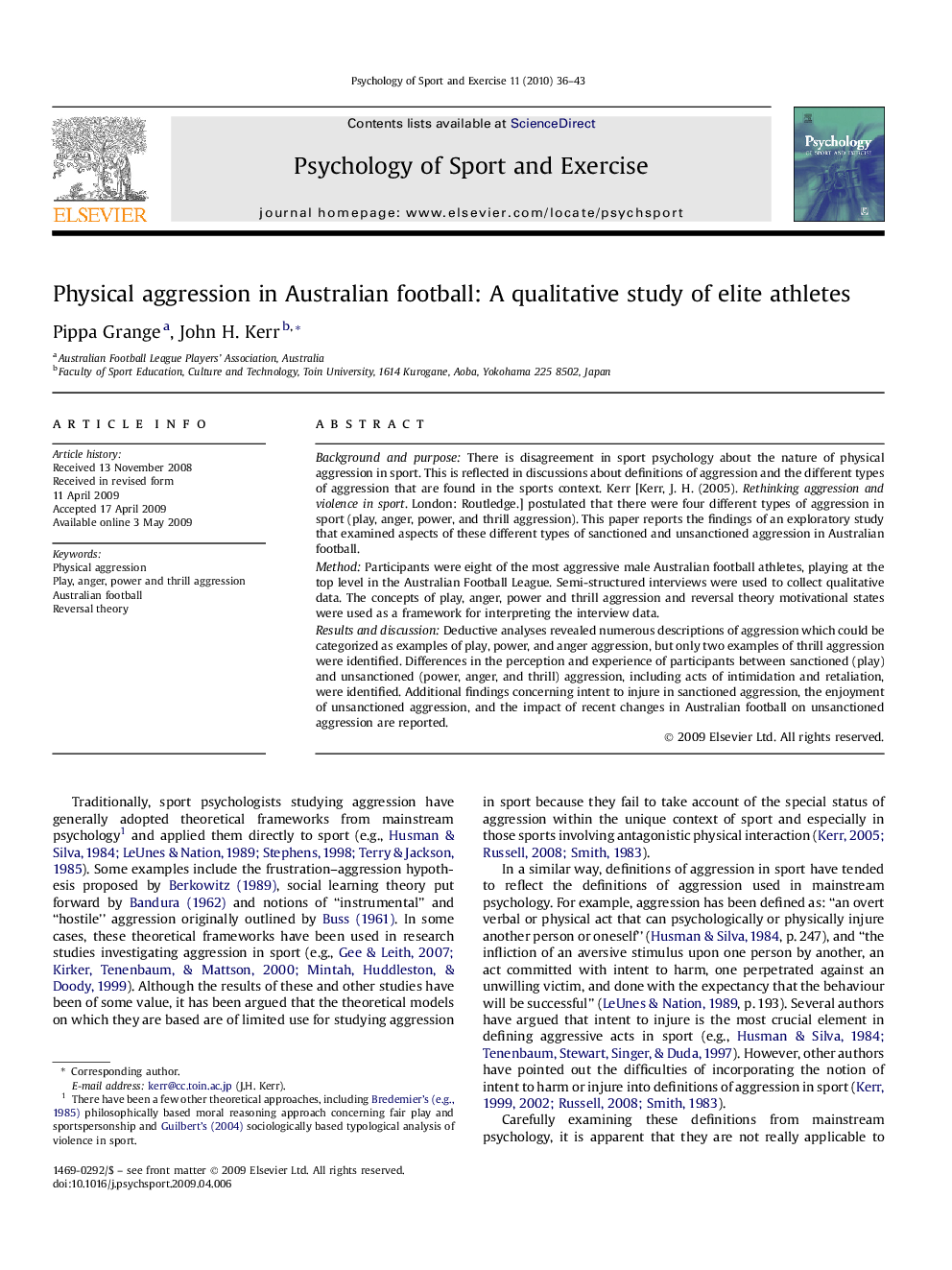| Article ID | Journal | Published Year | Pages | File Type |
|---|---|---|---|---|
| 894664 | Psychology of Sport and Exercise | 2010 | 8 Pages |
Background and purposeThere is disagreement in sport psychology about the nature of physical aggression in sport. This is reflected in discussions about definitions of aggression and the different types of aggression that are found in the sports context. Kerr [Kerr, J. H. (2005). Rethinking aggression and violence in sport. London: Routledge.] postulated that there were four different types of aggression in sport (play, anger, power, and thrill aggression). This paper reports the findings of an exploratory study that examined aspects of these different types of sanctioned and unsanctioned aggression in Australian football.MethodParticipants were eight of the most aggressive male Australian football athletes, playing at the top level in the Australian Football League. Semi-structured interviews were used to collect qualitative data. The concepts of play, anger, power and thrill aggression and reversal theory motivational states were used as a framework for interpreting the interview data.Results and discussionDeductive analyses revealed numerous descriptions of aggression which could be categorized as examples of play, power, and anger aggression, but only two examples of thrill aggression were identified. Differences in the perception and experience of participants between sanctioned (play) and unsanctioned (power, anger, and thrill) aggression, including acts of intimidation and retaliation, were identified. Additional findings concerning intent to injure in sanctioned aggression, the enjoyment of unsanctioned aggression, and the impact of recent changes in Australian football on unsanctioned aggression are reported.
